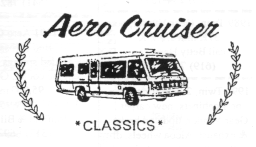Quick Links:
> Members Page
> Organization
> Rally Page
> Picture Page
> News Letters
> Swap Shop
> AC Group
on Google
< Back to the
Club's Public
Page
|
Brake Fluid Explained
Abbreviated from a TRD article
By
James Walker
a brake specialist who has worked for Delphi, TRW, GM, Bosch, and Ford.
He is currently an engineer for Carr Engineering and a freelance writer.
This is just a brief run down on Brake Fluids, their designations and
applications and maintenance.
First, let's understand DOT ratings. DOT
stands for Department Of Transportation. The DOT (sometimes referred to as the
Dotties) write characteristics for brake fluid. They do not say what it's
composition is, just what it should do. If you can get maple syrup to meet the
specs, then it is good. All of the DOT ratings must meet 4 specs:
1. It must
not solidify. There is no low end number for this but since -40F is fairly
common in the USA you know all fluids must function below that.
2. It must
not vaporize. Again, there is no specific number given by DOT, but since 400F
can easily occur at the cylinders, we can expect a fairly high evaporating
number.
3. It must be compatible with rubber seals.
4. It must not be
excessively compressible.
So the one fluid that meets all of the above
and is yet reasonably easy to make and cost-effective is a glycol-ether based
fluid. However, glycols have one very undesirable side effect, they love to
absorb water. This is why brake fluids come in sealed containers. Once it has
been opened, the water absorbing process begins. In a sealed system, like our
brake lines it's a small problem. But for a half empty container without a
seal sitting on the shelf, the amount of H2O grows rapidly. Even with the cap on
tight, the container is "breathing". Getting warm during the day and cooling
off at night, air with moisture is seeping into the container and being absorbed
by the fluid.
When you use this half full brake fluid, you are adding
moisture to your braking system and rust will start to occur. It also lowers the
boiling point of the fluid and raises the freezing point. This is where it gets
kind of weird. The colder it gets, the lower the ability of the glycol to hold
water, so pockets or bubbles of water can form which then freezes. So the point
is to buy smaller bottles of fluid to keep on hand and discard the remainder
after it is opened.
Now, realistically, water is everywhere and will
eventually find its way into everything, including your sealed brake system. The
point being made here, is not to help it along any further. Besides, if you
flush your system at regular intervals, the old fluid will also flush any water
it has absorbed. Discard half full shelf bottles.
So as brake systems got
more intense, DOT started upgrading their specs. The oldest spec you can still
buy is DOT 3. The Dotties also decided to list the specs as "dry", that is
0% water content, and "wet"¯, which is 3.7% water content. Beyond 3.7% water
content is considered unusable.
DOT 3 – is still a basic glycol-ether
fluid, but must a have a 0% water content boiling point of 401F, and a 3.7%
water content boiling point of 284F. (As Mary Poppins would sing: "Just a
little bit of water makes your stopping distance longer".)
DOT 4 - starts
seeing the addition of borate esters which helps resist water. The 0% H2O
boiling point of DOT 4 is to be above 446F, and the 3.7% boiling point is 311 F. Yet
the borates will degrade with time in which they start absorbing
water and make the boiling points go down below those of DOT 3. So it is
recommended that you use DOT 4 only if you are religious about flushing and
changing your brake fluids.
DOT 5 – Is the only really different brake
fluid as it is Silicon based. It's 0% boiling point is 509F and it's 3.7%
boiling point is 356F. Also, it is a thinner fluid making it more freeze
resistant. So is this the Grail of brake fluids? Well, there's 2 downsides.
The first is that because of it's larger molecules, air molecules can fit in
between and resistance to compressibility goes down. Two is that all the fluids
listed here DOT 3,4,5.1 are all intermixable. But DOT 5 stands alone, it cannot
be mixed with any other fluid. Another advantage is that DOT 5 is less corrosive
to paint than the others. Currently only one manufacturer supplies Dot 5 as OEM
fluid: Harley.
Finally comes DOT 5.1 – So finally manufacturers came up
with a glycol formula that matched the DOT 5 silicon based characteristics.
Since the two were not compatible and DOT didn't want confusion, they called
this new formula 5.1. Sometimes manufacturers refer to this as 4+ or Super 4. It
is pricier.
There is no magical formula as to which is better. Somewhere
between price and performance is what you will settle on. The two big notes here
are flush your system at regular intervals as prescribed by the vehicle
manufacturer and don't keep opened bottles for use later. Buy big bottles for
the actual flush and keep a little sealed bottle for topping off if necessary.
-=Dale=-
 Return to the Tip List. Return to the Tip List.
-- Disclaimer --Information
on this Web Site is provided by members of the "Aero Cruiser Classics" Motor home Club. All
information on this site is contributed by the club members or outside sources and is believed to be reliable; however,
there is no warranty or guarantee that said information or advice is correct or free of defect. It is
offered on a best effort basis and is to be used at your own risk.
|

|
Copyright© 1999-2016
Freelance Ink.
All Rights Reserved.
|

|
|
|

